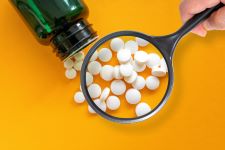Case Studies
Search >>
Dietary fiber testing in supplements is a highly complex process, requiring careful selection of testing methods customized to specific fiber sources. Many companies may struggle with choosing the right dietary fiber testing methodology, often defaulting to the most convenient or cost-effective option without realizing the implications. This blog will review common types of dietary fiber sources used in supplements along with strategies to ensure accurate and timely results.
In today’s food, dietary supplement, and beverage industry, ensuring accurate sugar content in products is more important than ever. With increasing consumer awareness about nutrition and stricter regulatory requirements, companies must verify and control the levels of sugars present in their products. Sugar testing plays a vital role in maintaining product quality, meeting labeling regulations, and supporting claims such as “low sugar,” “no added sugar,” and “zero sugar.” This blog explores the different types of sugars and sweetener alternatives and considerations when submitting products for testing.
Setting Chemical Contaminant Specifications for Dietary Supplements: Navigating the CFR Requirements
Ensuring the safety and quality of dietary supplements is a cornerstone of regulatory compliance. Among the most critical steps in this process is establishing specifications for chemical contaminants. These contaminants, which can arise from raw materials, manufacturing processes, or environmental exposure, must be controlled to meet the standards outlined in the Code of Federal Regulations (CFR). This guide is designed to assist manufacturers in establishing strong chemical contaminant specifications while ensuring regulatory compliance.
Testing complex botanical matrices using HPTLC goes beyond simply running a sample through a machine—it requires a deep understanding of both the plant material’s unique properties and the strengths and limitations of HPTLC. In this article, we’ll explore the intricacies of testing complex botanical samples using HPTLC, highlighting the challenges involved and how this technique can effectively overcome them—even in the most complex matrices.
Pilot-scale and small-batch production play a critical role in food, beverage, and dietary supplement development. These early stage runs allow companies to fine-tune formulations, troubleshoot production challenges, and test market viability before full-scale commercialization. However, without proper planning, pilot production can lead to costly setbacks. This paper outlines key considerations—including food safety, quality control, production troubleshooting, and packaging—to ensure your pilot runs set the stage for a successful market launch.
Advanced analytical methods play a crucial role in identifying emerging contaminants, unexpected adulterants, food contact material migrants, and other unanticipated chemicals that may compromise regulatory compliance and consumer safety for dietary supplements. Read our white paper to learn about suspect screening and non-target analysis workflows.
This webinar explores approaches to method and monograph development while maintaining safety and quality standards specific to the OTC and Dietary Supplement industries. The speakers share industry insights regarding current state and potential changes with a changing administration. Original Air Date: February 24, 2025.
In this on-demand webinar we'll provide you with the tools and knowledge you need to navigate Amazon's Dietary Supplements Policy. Original airdate April 24, 2024.
With so many steps in dietary supplement production, the responsibilities for regulatory compliance quickly becomes complicated. This infographic provides an overview of responsibilities for each stage, including manufacturing, holding, packaging, and for brand owners.
In this on-demand webinar, you will learn essentials of FDA Form 483 observations, compliance responsibilities, and the dietary supplement regulatory landscape. Original airdate November 16, 2023.
















